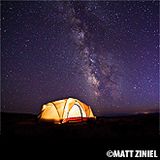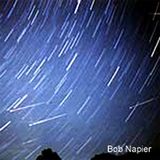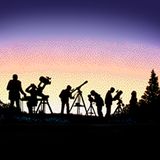
Watching the Milky Way rise across the night sky is one of the most beautiful sights on Earth. And seeing it rise from a dark sky location for the first time can be an unforgettable experience for those who are accustomed to city lights. But capturing such a view through the lens of a camera is no small feat. There's a science to night sky photography, and a few basics you should know.
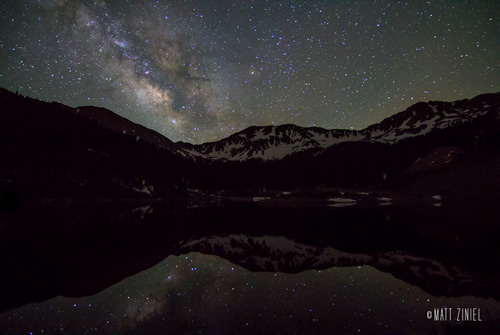
Milky Way over Wheeler Wilderness in New Mexico.
Orion caught up with Matt Ziniel, a Colorado-based photographer and cinematographer who is somewhat obsessed with the night sky. Or at least, the stars seem to appear in a large swath of his work. Well-known for his long exposure and time-lapse photography of nature, Ziniel shares his enthusiasm for the great outdoors in the following interview, as well as a few tips and tricks for capturing breathtaking images of the night sky.
Matt Ziniel on Capturing the Night Sky:
Orion: What are your favorite dark sky destinations for camping out under the stars and photographing?
Matt Ziniel: One of my favorite locations to camp and photograph the night sky is Canyonlands National Park in Utah. There is something very special about the desert landscape and the feelings that it evokes. Minimal light pollution, combined with the dramatic desert landscape, makes for endless photographic possibilities.
Orion: What are the ideal conditions for photographing the night sky?
Ziniel: There are many variables that affect your images when shooting stars, such as the moon cycle, light pollution, cloud cover, and time of the day. Rarely do all these conditions come together perfectly, so do not let any of these factors hinder you from going out and shooting. You do not need to be in the middle of nowhere to capture images of the stars. Some of my favorite night images have been captured within city limits, so no matter where you are, you can get out and experiment with long exposure night photography.
Orion: What equipment and gear do you find essential?
Ziniel: I always try to travel as light as possible, but here are a few items you will never find me without on my camping photo adventures:
1. Tripod. Long exposures require a static camera, so a tripod is a must.
2. A fast wide angle lens. I prefer an f2.8 lens or faster for capturing the night sky, and when shooting stars I like the sense of expansiveness and perspectives that a wide angle lens gives.
3. Headlamp/Flashlight. Although your eyes adjust to the night, a light is still an essential tool for seeing your way around, checking camera settings, and framing.
Orion: A red flashlight or headlamp might be great for this, since it keeps your pupils dilated and your eyes adjusted to the darkness. Can you share a few tips for photographing the night sky?
Ziniel: There are many tips and tricks for night photography, and the best way to learn is get out there and practice, but here are some simple, effective tips for the beginning night shooter:
1. One of the simplest, but most effective tips is to shoot your photos in RAW if your camera is capable of it. RAW allows for much more control in the editing of your images compared to JPEGs. Do note that shooting RAW requires an editing and processing software such as Adobe Lightroom or Photoshop in order to work with your images or print them.
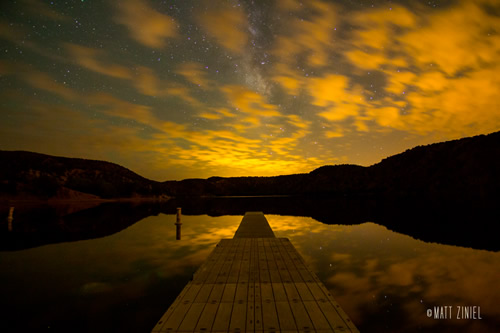
Milky Way through the clouds over Santa Cruz Lake in New Mexico.
2. Good composition is a fundamental principle of photography, but composing your shots at night under the stars is not the easiest thing to do, so here are a few tips to nail your composition:
I use a high powered flashlight to highlight elements within the frame as I look into the eyepiece. I prefer the "Goal Zero Bolt" with its adjustable beam and brightness and it's ability to be solar powered on my camping adventures.
Secondly, take a test shot at your camera's highest ISO setting to get the brightest possible image in order to see your framing. Once you have your desired composition, lock down your tripod, and set your camera to the lowest ISO setting you can that will still achieve your desired exposure. The higher the ISO is, the more undesirable grain that will be visible in your photo.
Orion: Awesome. What is the longest exposure you've ever taken?
Ziniel: I have taken some exposures over 30 minutes, but most of my night shots are between 15 and 30 second exposures. Many of my photos are strung together into time-lapses, and in order to make the stars appear as they do to the human eye and not as trails, I rarely shoot over 30 second exposures. A formula I came across online to avoid star trails is known as the "500 rule." 500 divided by the focal length of your lens will give the maximum exposure time before your stars will trail.
Orion: Is there a sweet spot that you'd say works for most night sky shots or does it vary?
Ziniel: It definitely varies depending on shooting conditions, and the lens and camera you are using, but a good starting place is a 30 second exposure at ISO 3200 with your lens set to the most wide open aperture setting (lowest number f stop).
Like anything new, there is a learning curve with night photography, but every time you go out and shoot you will learn something new. Night photography allows for a lot of experimentation, so do not be afraid to try anything your mind can think up, and most importantly have fun!
Matt Ziniel is a freelance cinematographer / photographer based in Colorado, USA. He works in the action sports and outdoor lifestyle scene, and feels most in his element capturing people doing what they love in the beautiful outdoors. Matt is well known for his long exposure and time-lapse photography. To find out more about Matt and his work, or purchase one of his prints, check out his website mattZINIEL.com or his photo portfolio at 500px.com/MattZiniel/sets
Maria Grusauskas is the Community Editor at Orion Telescopes & Binoculars, and a freelance writer in Santa Cruz, CA. A beginner in the hobby, Maria has fallen in love with stargazing and astronomy, and looks forward to imaging and sketching her observations.




